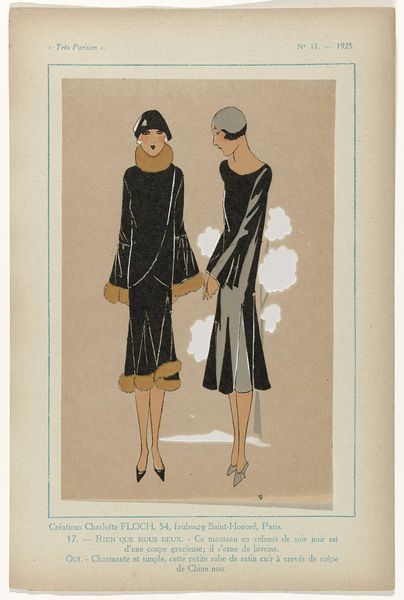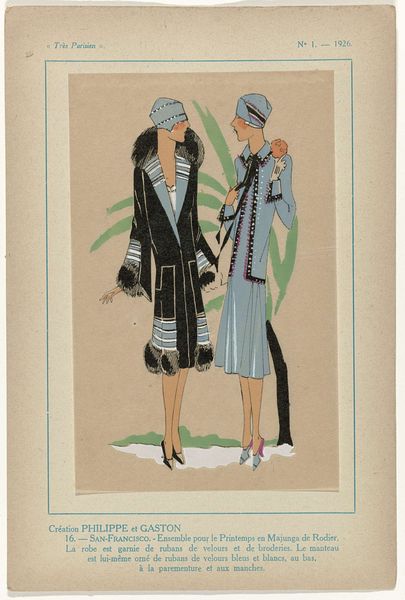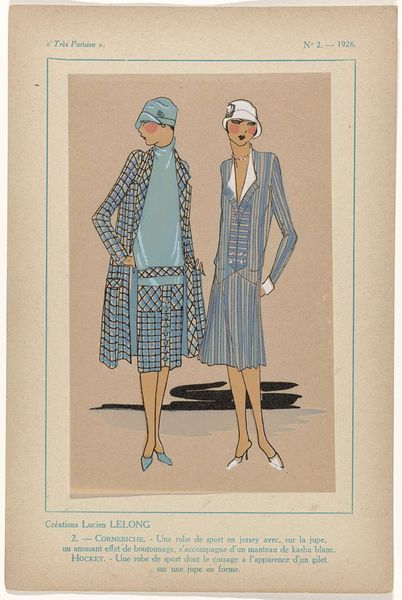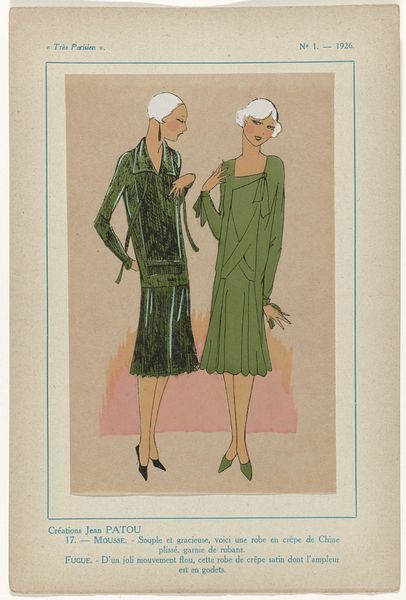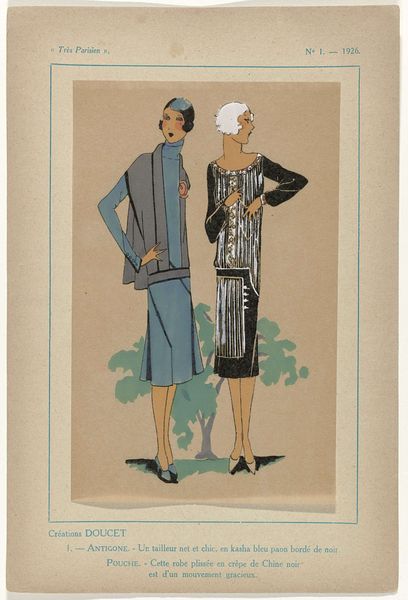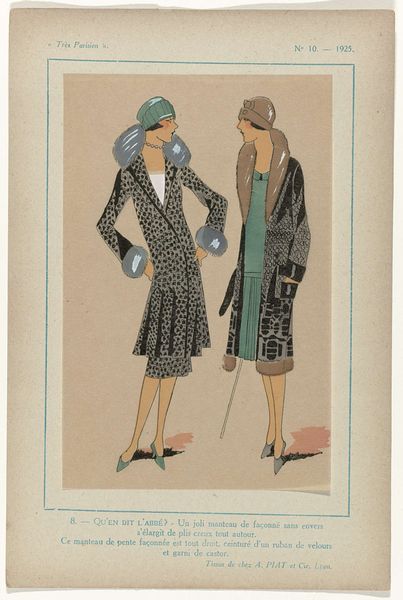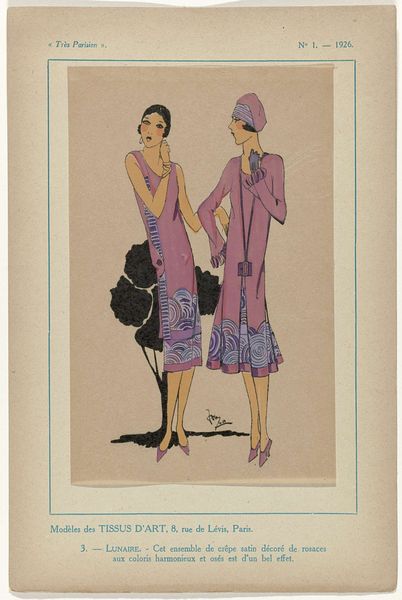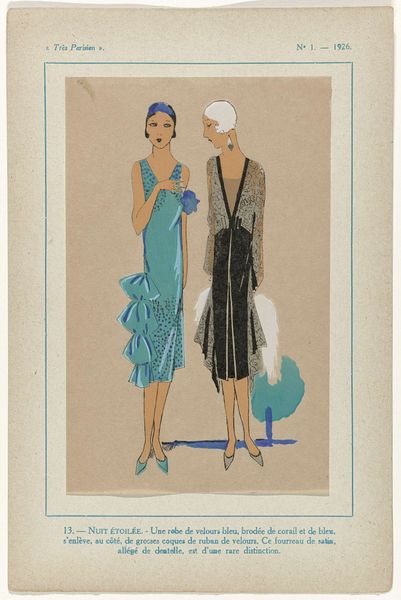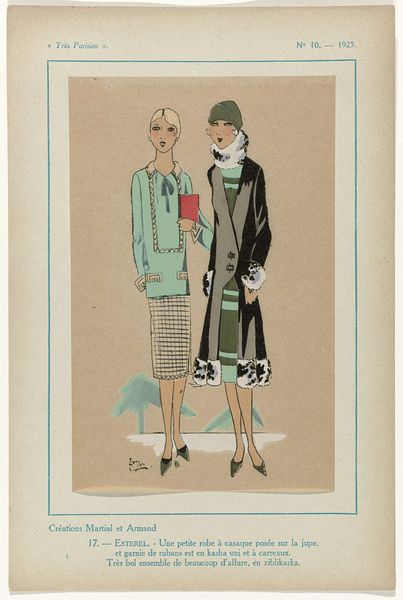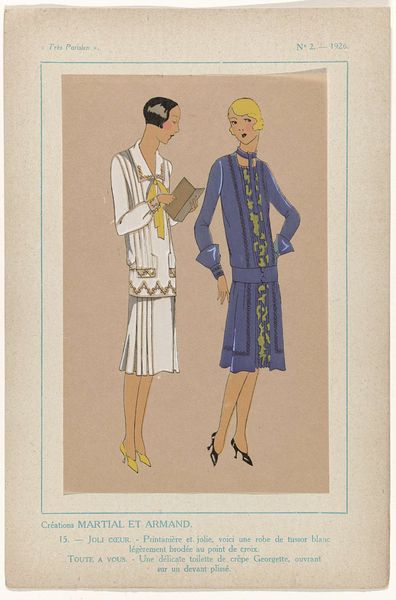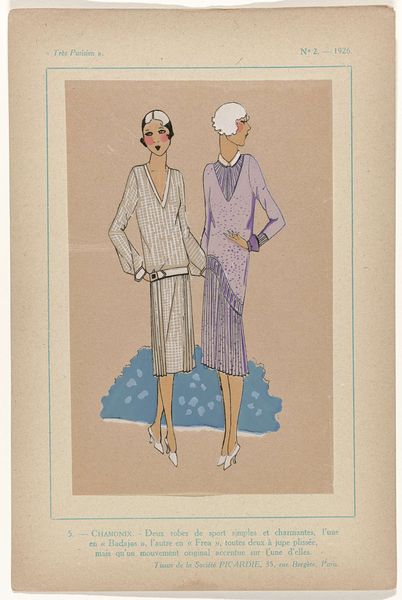
Très Parisien, 1925, No. 11, Pl. 7: Créations Nicole GROULT - TAIS -TOI MON COEUR 1925
0:00
0:00
gpjoumard
Rijksmuseum
Dimensions: height 195 mm, width 120 mm, mm
Copyright: Rijks Museum: Open Domain
Curator: So, here we have a print titled *Très Parisien, 1925, No. 11, Pl. 7: Créations Nicole GROULT - TAIS -TOI MON COEUR* by G-P. Joumard, currently held at the Rijksmuseum. It's a striking example of art from the 1920s; what are your first impressions? Editor: I immediately notice how stylized the figures are. They’re so chic! It’s almost like looking at a fashion plate rather than a "serious" work of art. I am really intrigued by how the cityscape in the background adds depth despite being minimal, how would you unpack the visual and cultural elements that Joumard engages with in this illustration? Curator: Exactly! And you’ve hit upon something key: the context. In the 1920s, fashion plates weren't simply about advertising clothes, they were about projecting a particular image of the modern woman and modern life. This print participates in that project. How do you think this piece engages with that image? Editor: I see it as an aspiration to high society and perhaps also projecting the social status. It presents a vision of Parisian sophistication, particularly in contrast to the realities for many after World War One. It suggests a cultural shift towards consumerism. Would that be a fair assessment? Curator: I agree completely. And think about who would have been viewing these prints. Publications like "Très Parisien" catered to a specific, largely middle-class, female readership eager to participate in the burgeoning culture of fashion. Joumard, and Nicole Groult the fashion designer, are complicit in constructing that desire and that aspirational lifestyle through visual representation. What are your thoughts on its relationship to the history of commercial art? Editor: This makes me consider the relationship between fine art and commercial art, and how the lines blurred during this period. And it underscores the fact that images themselves are powerful tools in shaping society. Thanks for the insights! Curator: Indeed. And by examining such prints, we gain a richer understanding of not just art history but also social and cultural history. It enriches our viewing experience.
Comments
No comments
Be the first to comment and join the conversation on the ultimate creative platform.
